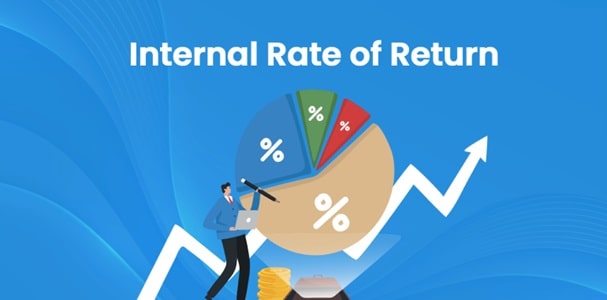For those of you who don’t know what Internal Rate Of Return is, and how it works, well then know that it is simply a financial metric or tool or a calculation that is used to make an estimate of the profitability of the investments made by a person or an entity. But worry not though, we won’t be getting into the calculation side of things here, nah, instead we will be talking about the possible advantages and disadvantages of Internal Rate Of Return or IRR for short. So yeah, let’s get to it right away.

Advantages of Internal Rate Of Return
Why not start with the positive side of things, like always?
1. Time Value of Money
First off, let’s talk about the IRR and its way of looking at money over time. This is super important because it treats money coming in early or later in your project’s life just the same. And yeah, this is super crucial, especially in India where the economy is always on the move.
2. Making Smarter Business Choices
Now, here’s the deal with IRR: it’s like your financial compass. It helps businesses tell apart the good deals from the bad ones. This kind of clear thinking is what you need to guide your company’s money to the more profitable spots. It’s all about making smart moves for the future, you know?
3. Keeping it Simple and Straightforward
And the best part? IRR is easy to get the hang of. It’s not just for the big players; even the smaller businesses in India can use it with no sweat. It gives you a quick peek at how your project might turn out, money-wise, without all the headaches.
4. Getting the Most Out of Net Present Values
You know, when companies use IRR, they’re really stepping up their game in maximizing their net present values. This is super important because it gives everyone a much clearer idea of how the company is doing, we’re talking about performance and profitability here. It’s kinda like having a high-powered telescope to check out the stars, IRR lets businesses zoom in on their financial universe to see what’s really shining bright.
5. Smarter Way to Handle the Cash
Now, let’s talk about IRR’s big role in smart capital management. For companies, especially those in India, getting their investment decisions right is a huge deal. IRR is like their go-to guide for this. It’s all about making the most out of every rupee and ensuring that the shareholders are smiling at the end of the day. Think of it as the company’s way of saying, ‘We’ve got this’ when it comes to handling their money smartly and making sure everyone involved gets their fair share of the pie.
Disadvantages of Internal Rate Of Return
Alright, onto the less shiny side of IRR to give you the full picture.
1. Economies of Scale Overlooked
So here’s the thing about IRR, it kinda misses the mark when it comes to the real cash value of the benefits. This means when you’re comparing different projects, especially the ones that are really different from each other, you might not get the full story. It’s like only seeing part of the picture, you know?
2. Assuming Too Much with Reinvestment Rates
Now, IRR has this habit of assuming that you’re gonna reinvest all your returns at the same rate. But let’s get real here, especially in the ever-changing Indian financial market, that’s pretty unlikely. It’s like expecting the weather to stay the same all year round, not gonna happen.
3. Challenges with Mutually Exclusive Projects
Here’s another hiccup with IRR, it’s not always the best at showing you the top pick when you’re weighing up different projects against each other, especially the ones that are mutually exclusive. This is a big deal when you’re trying to make those crucial investment choices. It’s just like trying to choose between apples and oranges without knowing which one’s juicier, you know?
4. Not Paying Attention to the Project’s Size
You know, the IRR method kinda misses the whole thing when it comes to looking at how big or small a project is. This is a big deal, especially when you’re trying to compare projects that are really different in size. Imagine you’re choosing between a small local project and a huge, multi-city one. The IRR method might make you think they’re kind of the same deal in terms of returns, but that’s not always true. You gotta keep in mind that a bigger project might bring more money, but it also comes with its own set of headaches and risks.
5. Forgetting About Future Costs
And here’s another thing, IRR doesn’t really take a peek into the future. It kinda turns a blind eye to the costs that might pop up down the road. This is super important, especially in a market that’s as lively and unpredictable as India’s. Let’s say you start a project, and it looks all shiny and profitable now. But what about later? There might be new expenses, like rising material costs or extra taxes, that could eat into your profits.
6. That Tricky Multiple IRR Issue
You know what’s a real headache? When you’re looking at projects that have cash flowing in and out all over the place, you might bump into this thing called multiple IRRs. Basically, it means you’ve got more than one way to measure your returns, which, let’s be honest, can make picking the best option kinda complicated.
7. When Wealth Boosting Isn’t on the Radar
Ever found yourself torn between Net Present Value (NPV) and IRR? Well, you’re not alone. But here’s the deal: when these two clash, NPV is usually your go-to. It’s like a trusty compass, especially when you wanna know how much you’re really adding to your wealth. IRR? Not so much, at least not in these tricky situations.
Conclusion
That’s pretty much it. Now you know why IRR is used, and when to use it, correct? But yeah, there are some instances where this whole Internal Rate Of Return thing might not work as you might think.
Internal Rate of Return FAQs
Q1. How is IRR calculated?
Ans: The IRR is the discount rate that makes the net present value (NPV) of a series of cash flows equal to zero. It is typically calculated using trial and error or using financial calculators or software.
Q2. What does a positive/negative IRR indicate?
Ans: A positive IRR indicates that the investment or project is expected to generate returns greater than the discount rate used in the calculation. Conversely, a negative IRR indicates that the project is expected to generate returns lower than the discount rate.
Q3. How is IRR used in investment decision-making?
Ans: IRR is used as a tool for comparing the profitability of different investments or projects. Generally, the higher the IRR, the more attractive the investment is considered. It is often compared to the required rate of return or cost of capital to make investment decisions.
Q4. What are the limitations of IRR?
Ans: IRR does not provide information about the scale of investment or the actual value generated by the project. It can also produce multiple solutions or no solution at all in cases of unconventional cash flow patterns.

Meet Suhas Harshe, a financial advisor committed to assisting people and businesses in confidently understanding and managing the complexities of the financial world. Suhas has shared his knowledge on various topics like business, investment strategies, optimizing taxes, and promoting financial well-being through articles in InvestmentDose.com


